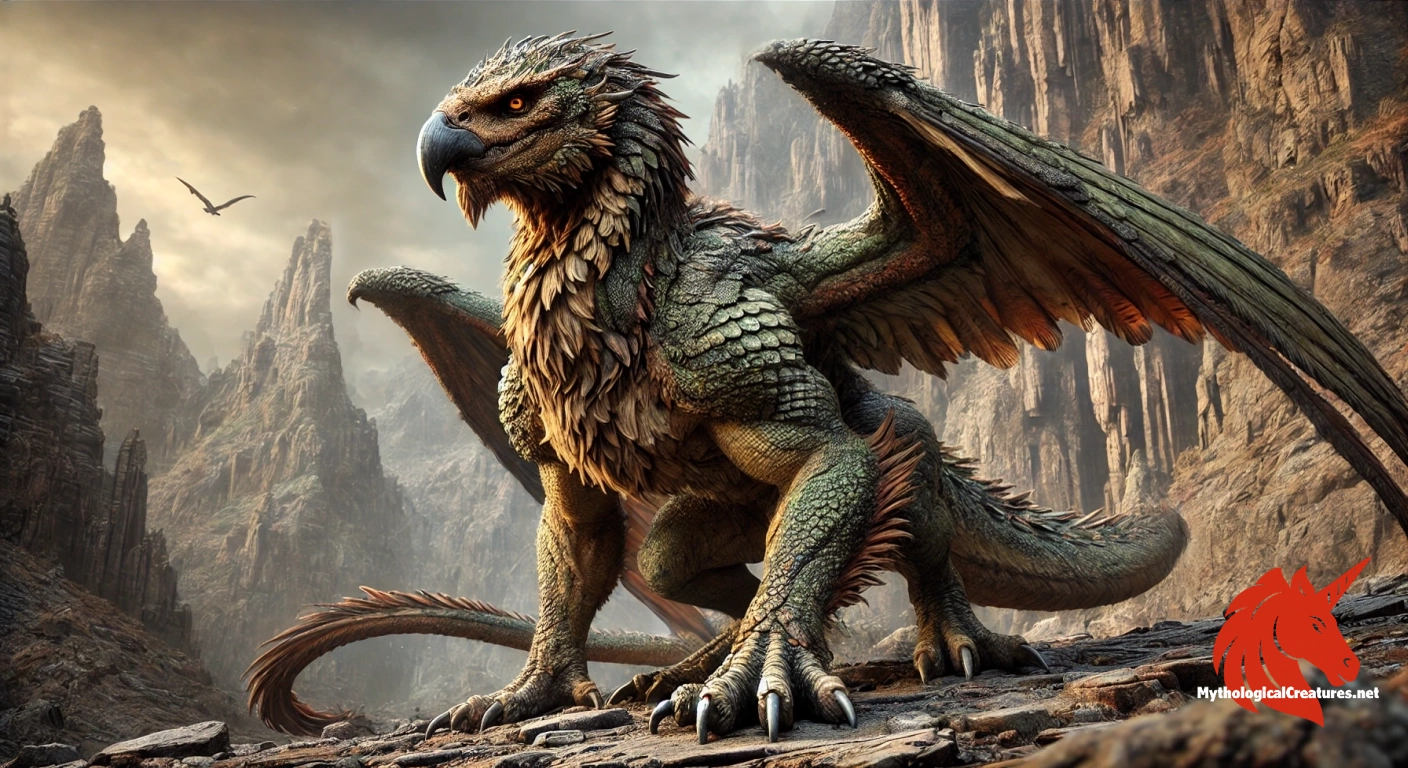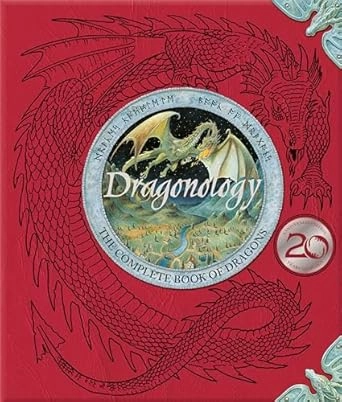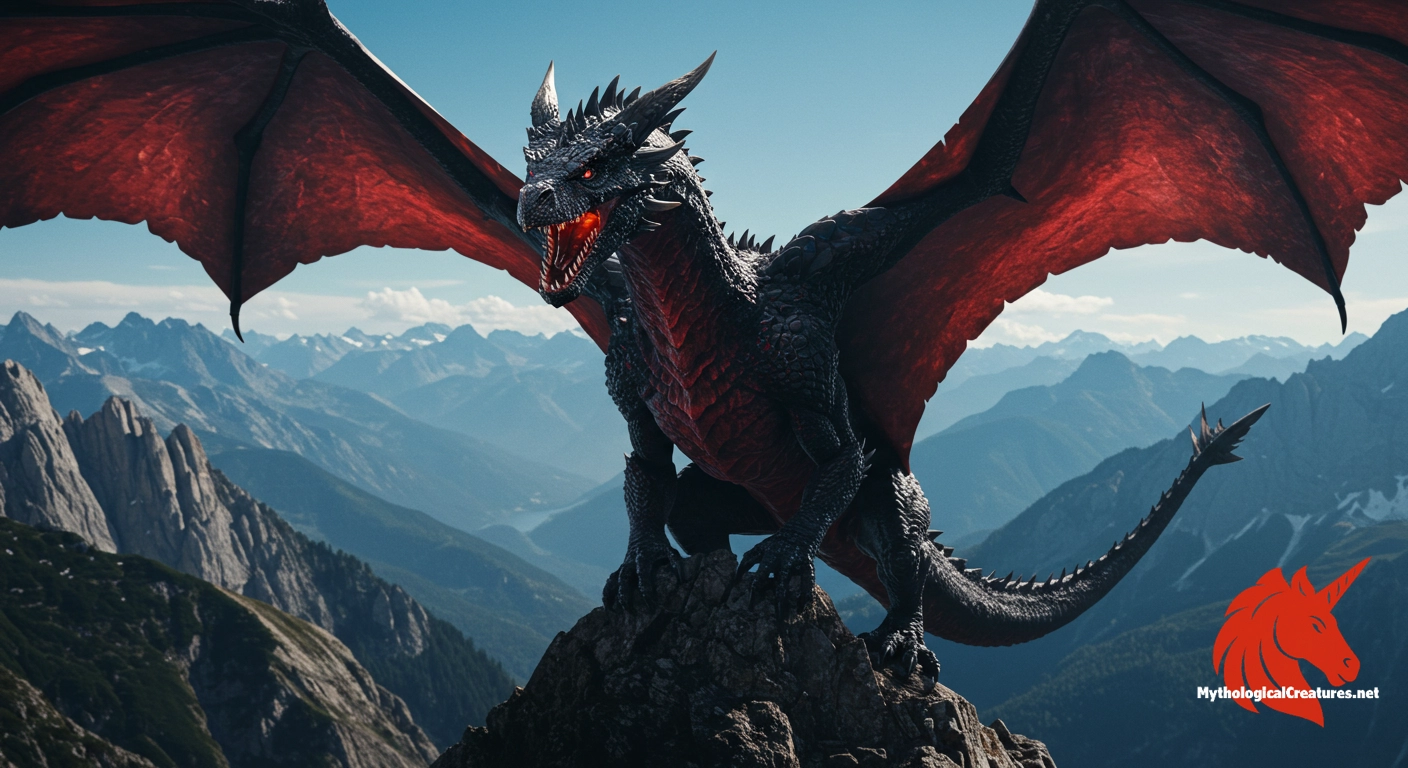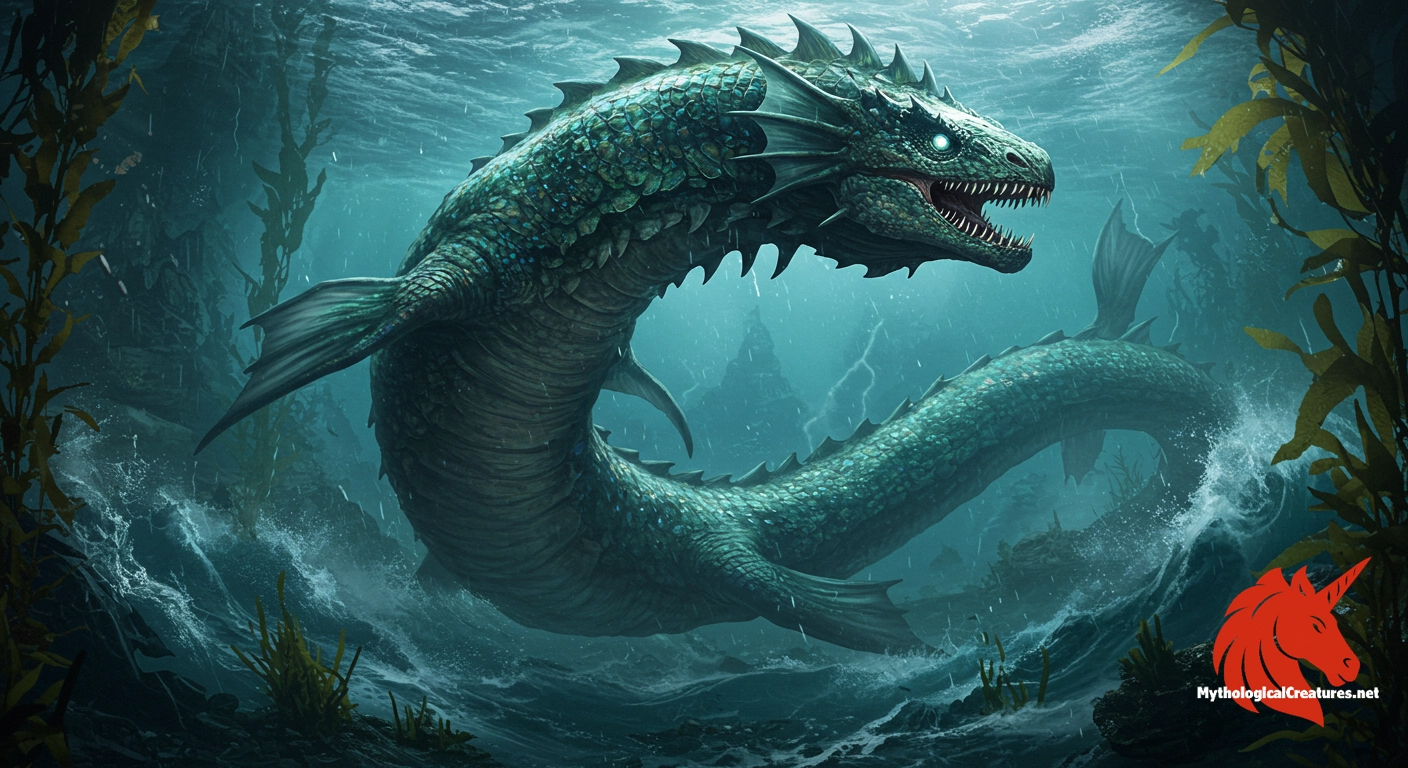An Introduction to Mythological Creatures

Dive into the Enchanting World of Mythological Creatures: Your Ultimate Introduction to Mythical Beasts and Legendary Monsters
Hey there, fellow dreamers, storytellers, and lovers of all things fantastical! Have you ever gazed at the night sky and wondered if a griffin soared among the constellations? Or felt a thrill run down your spine reading tales of brave heroes battling fearsome dragons? If so, you've come to the right place! Like you, we are utterly, irrevocably enchanted by the incredible tapestry of mythological creatures woven throughout human history.
For millennia, humans across the globe have spun breathtaking yarns of beings that defy the ordinary. These fantasy creatures – part animal, part human, sometimes wholly other – populate our ancient myths, our vibrant cultural folklore, and continue to ignite our imaginations today. From the depths of the ocean to the highest mountain peaks, from sun-drenched deserts to shadowy forests, these legendary monsters and mythical beasts are far more than just figments of imagination; they are reflections of our deepest hopes, fears, and understandings of the world around us.
But where do you even begin to navigate this magnificent menagerie? The sheer volume of types of mythical creatures out there can be overwhelming. That's why we, fellow mythical creature enthusiasts, have created this directory – your ultimate portal to the wonders of creatures of mythology. Consider this your mythology encyclopedia, your mythological creatures database, and your go-to mythical creature resource all rolled into one. We've built this space for you, the curious minds eager to learn about mythical creatures, the creative souls searching for inspiration, and the passionate fans wanting to discover legendary beasts in all their glory.
Within these digital pages, you'll find a treasure trove of information, meticulously curated to bring you closer to the mythical creature origins, mythical creature stories, mythical creature meanings, and rich mythical creature symbolism that makes each being so compelling. We're not just listing names; we're diving deep into the lore, the art, the literature, and even the film interpretations that have shaped how we see these creatures today. Prepare to be captivated, informed, and utterly amazed as we begin our exploration, starting with perhaps the most iconic of all supernatural beings: the dragon.
Featured Mythological Treasure

Dragonology: The Complete Book of Dragons (Ologies)
Do you believe in dragons? Now, for the first time, the long-lost research of a renowned nineteenth century dragonologist is presented in all its eccentric glory.
Dragons: A Tale of Two Traditions – East Meets West in Fire and Majesty
Is there any mythical creature more universally recognized and revered than the dragon? From children's books to blockbuster movies, dragons breathe fire into our imaginations. But did you know that the very essence of a dragon shifts dramatically depending on whether you look East or West? Understanding the difference between Eastern and Western dragons is key to appreciating their multifaceted appeal.
Western Dragons: Guardians of Gold and Givers of Grievous Harm
In Western mythology, particularly in European traditions stemming from ancient myths and medieval folklore, dragons are often depicted as formidable, fire-breathing reptiles with scales like armor, powerful wings, four legs tipped with fearsome claws, and a long, serpentine tail capable of crushing stone. Think of Smaug from The Hobbit, or the dragons battled by knights in shining armor in countless tales.
These dangerous Western dragons are frequently portrayed as antagonists, hoarders of vast treasures – gold, jewels, and sometimes even captive princesses! They embody chaos, destruction, and the primal forces of nature that humanity must overcome. Slaying a dragon is often the ultimate test of a hero's courage and virtue, symbolizing the triumph of good over evil, order over chaos. Consider the dragon slain by Saint George, a classic example of this archetype, or the terrifying beasts faced by Beowulf and King Arthur. These mythical creature stories are filled with epic battles and showcase the dragon as a powerful, often malevolent force.
But even within Western traditions, dragons aren't always purely evil. Some tales depict wise, ancient dragons holding secrets of the universe, or even acting as guardians of sacred places. The mythical creature symbolism of the Western dragon is complex, encompassing not just destruction but also power, wisdom (albeit often of a dark or ancient kind), and the untamed aspects of the world.

Eastern Dragons: Benevolent Protectors and Symbols of Prosperity
Now, journey eastward to the rich tapestry of Eastern mythology, particularly Chinese, Japanese, and Korean traditions. Here, the dragon transforms into something altogether different. Benevolent Eastern dragons, especially the iconic Chinese dragon, are celestial beings, symbols of good fortune, wisdom, power, and prosperity. They are often associated with water – rivers, lakes, and rain – and are seen as bringers of life-giving rainfall, essential for agriculture and prosperity.
Unlike their Western counterparts, Eastern dragons are typically depicted without wings, yet possess the magical ability to fly through the air, often amidst swirling clouds and mist. They are serpentine in form, with scales, whiskers, and often elaborate horns or antlers. Think of the majestic, serpentine dragons adorning temples and artwork across Asia – these are beings of grace, power, and auspiciousness.
The mythical creature meanings of Eastern dragons are deeply rooted in cultural values of harmony, balance, and cosmic order. They are associated with emperors, representing imperial power and benevolent rule. Dragon dances and festivals celebrate their power and invoke their blessings for good harvests and prosperity. While some Eastern dragon tales might feature challenges or conflicts, they rarely portray dragons as inherently evil. Instead, they are respected, revered, and deeply integrated into the cultural fabric.
Exploring the cultural folklore surrounding dragons reveals not just different physical forms, but fundamentally different worldviews. In the West, conquering the dragon often signifies progress and civilization; in the East, honoring the dragon ensures harmony and prosperity. This directory will delve deeper into these fascinating nuances, helping you truly appreciate the global dragon phenomenon.
Creatures of the Sea: Plunging into the Mysteries of the Deep
The ocean, vast and largely unexplored, has always been a source of both wonder and terror for humanity. It's no surprise then that creatures of the sea hold a prominent place in world mythology. These beings embody the mystery, power, and danger of the aquatic realm, reflecting our fascination with what lies beneath the waves.
Mermaids and Mermen: The Allure of the Human-Fish Hybrid
Perhaps the most globally recognized mythical creature of the sea is the mermaid (and merman). These captivating beings, mermaids and mermen folklore worldwide suggests, are human from the waist up and fish from the waist down, blending human intelligence and beauty with the mystery and fluidity of the ocean.
From ancient Greek sirens who lured sailors to their doom with enchanting songs, to the gentle selkies of Scottish and Irish folklore who could shed their seal skins to walk on land, mermaids embody a duality – alluring yet dangerous, beautiful yet otherworldly. The mythical creature stories surrounding mermaids often explore themes of longing, forbidden love between humans and sea creatures, and the inherent divide between the land and the sea. Think of Hans Christian Andersen's The Little Mermaid, a poignant tale of sacrifice and unrequited love, or the numerous siren myths that warned sailors of the ocean's treacherous beauty.
Kraken: The Terror of the Deep – A Giant Squid Unleashed
For those who sailed the high seas, the fear of monstrous creatures lurking beneath the waves was very real. Enter the Kraken, a legendary giant squid Kraken mythology speaks of, capable of dragging entire ships to the ocean floor. Originating in Scandinavian folklore, the Kraken embodies the raw, untamed power of the ocean depths and the vulnerability of humans in the face of nature's fury.
Descriptions of the Kraken vary, sometimes depicting it as a colossal octopus, other times as a massive squid, but the core image remains consistent: a monstrous cephalopod capable of unimaginable destruction. Mythical creature stories of the Kraken often served as cautionary tales for sailors, reminding them of the dangers of the sea and the limits of human control. Modern interpretations, particularly in literature and film, continue to portray the Kraken as a terrifying and awe-inspiring symbol of the ocean's hidden depths.
Leviathan: Cosmic Sea Serpent of Chaos and Creation
Venturing into the realm of biblical and Near Eastern mythology, we encounter the Leviathan, a leviathan sea serpent chaos symbol and primordial sea monster of immense scale and power. The Leviathan isn't just a creature; it's a force of nature, often associated with chaos, the untamed ocean, and sometimes even the very fabric of creation.
In Jewish and Christian traditions, the Leviathan is described in the Book of Job as a creature of immense power, defying human control and embodying the awe-inspiring, sometimes terrifying aspects of divine creation. While often associated with chaos and destruction, some interpretations also see the Leviathan as a force that, while powerful, is ultimately under God's control, representing the balance between order and chaos in the cosmos. The mythical creature symbolism of the Leviathan is profound, reflecting humanity's understanding of the universe and the forces that shape it.
Our directory will guide you through the depths of these aquatic legends and many more, from the playful selkies to the fearsome sea serpents, revealing the rich tapestry of mythological creatures that populate the watery realms of human imagination.

Forest Guardians: Whispers in the Woods and Spirits of the Wild
Turning our gaze from the vast oceans to the mysterious depths of the forests, we enter another realm teeming with supernatural beings. Forests, with their shadowy interiors, rustling leaves, and echoing sounds, have long been seen as liminal spaces, places where the veil between worlds thins. It's here we find forest guardians, creatures deeply connected to nature, often embodying its protective, nurturing, or sometimes dangerous aspects.
Centaurs: Wisdom and Wildness – The Half-Horse Human
From centaur origins Greek mythology springs forth one of the most iconic forest beings: the Centaur. These creatures, half-human from the waist up and half-horse below, embody a fascinating duality – the rationality and intellect of humanity combined with the raw power and untamed spirit of the horse.
Centaurs are often depicted as wise, skilled in archery and hunting, and deeply connected to the natural world. Some, like Chiron, are revered as teachers and healers, embodying wisdom and knowledge. Others are portrayed as more wild and untamed, reflecting the untamed aspects of the forest itself. Mythical creature stories featuring centaurs often explore themes of nature versus civilization, instinct versus intellect, and the complex relationship between humans and the wild.
Fairies: A World of Whimsy and Wonder (and Sometimes, Woe!)
Step into the realm of types of fairies and their powers, and you enter a world of dazzling diversity and enchanting mystery. Fairies, also known as faeries, fae, or the fair folk, are small, magical beings found in cultural folklore around the world, particularly in Celtic and European traditions. But don't let their diminutive size fool you – fairies are forces to be reckoned with!
From benevolent nature spirits and playful sprites to mischievous tricksters and even dangerous entities, fairies embody the unpredictable and often magical aspects of the natural world. They are associated with forests, meadows, hills, and hidden places, and are often seen as guardians of nature. Mythical creature stories about fairies are incredibly varied, ranging from tales of helpful brownies and garden gnomes to cautionary tales of changelings and fairy rings. Understanding fairy lore requires navigating a complex and often contradictory body of cultural folklore, but the rewards are immense, revealing a world of wonder and enchantment just beyond our everyday perception.
Leshy: Slavic Spirit of the Forest – Protector of Wildlife
Journey to Slavic cultural folklore and you'll encounter the Leshy, a powerful Slavic forest spirit Leshy protection is his domain. The Leshy is a guardian of the forest and its wildlife, a shapeshifting entity who can appear as a human, an animal, or even a whirlwind.
The Leshy is deeply connected to the forest ecosystem, protecting the animals within it and guiding (or sometimes misleading) those who venture into his domain. He is often depicted as having green skin, glowing eyes, and a beard of moss or leaves, visually embodying his connection to the forest. Mythical creature stories about the Leshy often serve as reminders to respect the forest and its inhabitants, highlighting the importance of balance and harmony with nature.
Our directory will guide you through the whispering woods of folklore, introducing you to a vast array of forest guardians from around the world, each with their own unique powers, roles, and mythical creature symbolism.

Your Journey into Mythology Begins Now!
This is just a taste, a mere glimpse into the breathtaking world of mythological creatures that awaits you in our directory. We invite you to delve deeper, to explore mythology with us, to discover legendary beasts you've never heard of, and to rediscover old favorites with fresh eyes.
Whether you are a writer seeking inspiration, an artist searching for muses, a student eager to learn, or simply a fellow fan captivated by the magic of ancient myths, this directory is for you. Consider this your mythological creatures guide, your mythology encyclopedia, your mythical creature database – a living, breathing resource constantly expanding as we uncover more wonders of world mythology.
So, come on in, brave adventurer! The realms of mythical creatures are vast, enchanting, and waiting to be explored. Let your curiosity be your compass, and let the stories of these incredible beings ignite your imagination. Welcome to the community of mythical creature enthusiasts – your journey into the extraordinary begins now!